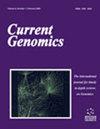High-Throughput Sequencing Revealing BCR and TCR Repertoires as Potential Prognostic Biomarkers for Pediatric Patients with B-ALL
IF 1.4
4区 生物学
Q4 BIOCHEMISTRY & MOLECULAR BIOLOGY
引用次数: 0
Abstract
Background: B-ALL is a hematologic malignancy that recurs in approximately 10-20% of children and has a poor prognosis. New prognostic biomarkers are needed to improve individualized therapy and achieve better clinical outcomes. Methods: In this study, high-throughput sequencing technology was used to detect the BCR and TCR repertoires in children with B-ALL. Results: We observed a gradual increase in the diversity of the BCR and TCR repertoires during the developmental stages (Pro-, Common-, Pre-B-ALL) of precursor B-ALL cells. Conversely, as minimal residual disease (MRD) levels on day 19 of induction therapy increased, the BCR/TCR repertoire diversity decreased. Furthermore, the BCR/TCR repertoire diversity was significantly greater in B-ALL patients at low risk and those harboring the ETV6/RUNX1 fusion than in patients with medium-risk disease and those harboring the ZNF384 fusion. Notably, the abundance of BCR/TCR clones varied significantly among patients with B-ALL and different clinical characteristics. Specifically, patients with Pre-B-ALL, low-risk disease, D19MRD levels <1%, and harboring the ETV6/RUNX1 fusion exhibited a predominance of BCR/TCR small clones. In our study, we noted an imbalanced occurrence of V and J gene utilization among patients with BALL; however, there seemed to be no discernible correlation with the clinical attributes. Conclusion: BCR/TCR repertoires are expected to be potential prognostic biomarkers for patients with B-ALL.高通量测序揭示 BCR 和 TCR 重排是小儿 B-ALL 患者潜在的预后生物标志物
背景:B-ALL是一种血液系统恶性肿瘤,约有10%-20%的儿童会复发,且预后较差。需要新的预后生物标志物来改善个体化治疗并获得更好的临床疗效。研究方法本研究采用高通量测序技术检测 B-ALL 儿童的 BCR 和 TCR 重排。结果我们观察到,在前体 B-ALL 细胞的发育阶段(Pro-、Common、Pre-B-ALL),BCR 和 TCR 重排的多样性逐渐增加。相反,随着诱导治疗第 19 天最小残留病(MRD)水平的升高,BCR/TCR 反应序列的多样性也随之降低。此外,低风险和携带 ETV6/RUNX1 融合基因的 B-ALL 患者的 BCR/TCR 基因库多样性明显高于中度风险和携带 ZNF384 融合基因的患者。值得注意的是,不同临床特征的B-ALL患者的BCR/TCR克隆丰度差异很大。具体来说,Pre-B-ALL、低风险疾病、D19MRD水平为1%和携带ETV6/RUNX1融合基因的患者主要表现为BCR/TCR小克隆。在我们的研究中,我们注意到 BALL 患者的 V 和 J 基因利用率不平衡,但似乎与临床属性没有明显的相关性。结论BCR/TCR 重排有望成为 B-ALL 患者潜在的预后生物标志物。
本文章由计算机程序翻译,如有差异,请以英文原文为准。
求助全文
约1分钟内获得全文
求助全文
来源期刊

Current Genomics
生物-生化与分子生物学
CiteScore
5.20
自引率
0.00%
发文量
29
审稿时长
>0 weeks
期刊介绍:
Current Genomics is a peer-reviewed journal that provides essential reading about the latest and most important developments in genome science and related fields of research. Systems biology, systems modeling, machine learning, network inference, bioinformatics, computational biology, epigenetics, single cell genomics, extracellular vesicles, quantitative biology, and synthetic biology for the study of evolution, development, maintenance, aging and that of human health, human diseases, clinical genomics and precision medicine are topics of particular interest. The journal covers plant genomics. The journal will not consider articles dealing with breeding and livestock.
Current Genomics publishes three types of articles including:
i) Research papers from internationally-recognized experts reporting on new and original data generated at the genome scale level. Position papers dealing with new or challenging methodological approaches, whether experimental or mathematical, are greatly welcome in this section.
ii) Authoritative and comprehensive full-length or mini reviews from widely recognized experts, covering the latest developments in genome science and related fields of research such as systems biology, statistics and machine learning, quantitative biology, and precision medicine. Proposals for mini-hot topics (2-3 review papers) and full hot topics (6-8 review papers) guest edited by internationally-recognized experts are welcome in this section. Hot topic proposals should not contain original data and they should contain articles originating from at least 2 different countries.
iii) Opinion papers from internationally recognized experts addressing contemporary questions and issues in the field of genome science and systems biology and basic and clinical research practices.
 求助内容:
求助内容: 应助结果提醒方式:
应助结果提醒方式:


